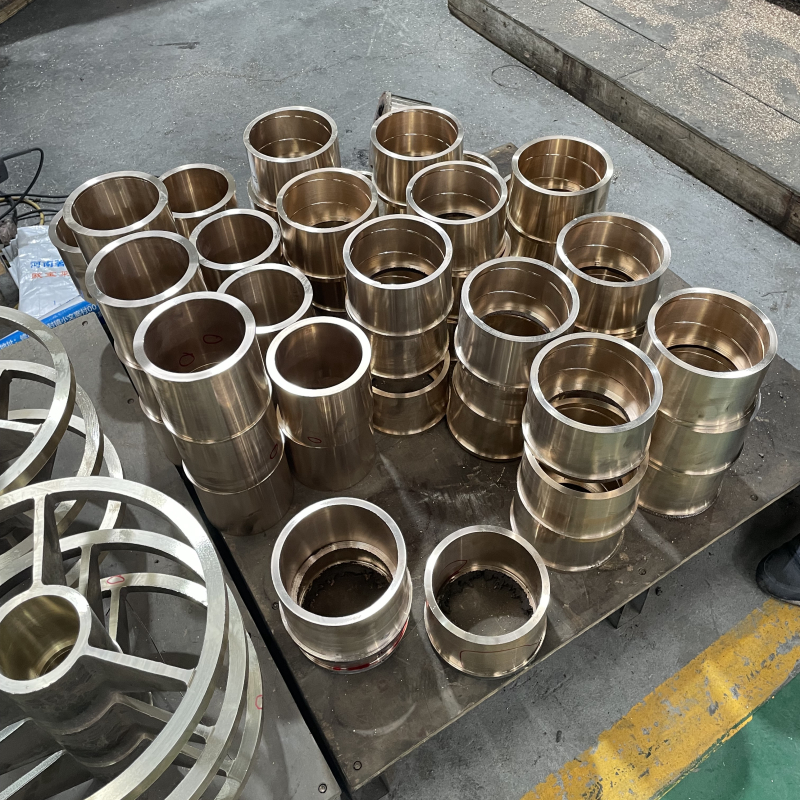There is a close relationship between the hardness and wear resistance of copper bushings.
First, the impact of hardness on wear resistance
Generally speaking, the higher the hardness of the copper sleeve, the better its wear resistance. When the hardness of the copper sleeve is higher, it can better resist the scraping and wear of external objects. For example, in some high-load, high-friction working environments, a higher hardness copper bushing can maintain its surface integrity and reduce the occurrence of wear.
Higher hardness copper bushings can reduce surface deformation and denting when in contact with other components. This is due to the fact that harder materials have a better resistance to compression and are able to withstand greater pressure without significant deformation. This ability to resist deformation helps to minimize wear, as deformation can lead to increased unevenness in the surface of the bronze bushing, which can increase friction and wear.
Harder copper bushings also reduce the occurrence of micro-cutting. During friction, softer materials tend to be cut by relatively harder objects, leading to increased wear. The copper bushing with higher hardness can resist such microscopic cutting, thus improving wear resistance.
Second, wear resistance to the feedback effect of hardness
Good wear resistance can maintain the hardness of the copper sleeve. When the copper bushing has good wear resistance, it is subjected to less wear in the working process, so its surface hardness will not be rapidly reduced because of wear. This helps to extend the service life of the copper bushing and keep it performing well for a longer period of time.
Highly wear-resistant copper bushings reduce the amount of heat generated by wear. Wear causes friction to generate heat, and heat reduces the hardness of the material. If the wear resistance of the copper bushing is good, the frictional heat generation will be reduced, thus reducing the risk of hardness degradation

third. Complexity of influencing factors
However, the relationship between the hardness and wear resistance of copper bushings is not a simple linear relationship. In addition to hardness, there are other factors that also affect the wear resistance of copper bushings, such as the organizational structure of the material, lubrication conditions, operating temperature, etc..
Different copper alloys have different hardness and wear resistance characteristics. For example, some copper alloys have specific alloying elements added, which can improve their hardness and wear resistance. In addition, the manufacturing process of the copper bushing will also have an impact on its hardness and wear resistance, such as heat treatment and surface treatment.
Lubrication conditions also have an important effect on the wear resistance of copper bushings. Good lubrication can reduce the coefficient of friction and reduce the occurrence of wear. In some cases, even if the hardness of the copper bushing is not very high, but under good lubrication conditions, it can also have good wear resistance.
In summary, there is a close relationship between the hardness and wear resistance of copper bushings, but this relationship is affected by a variety of factors. When selecting copper bushings, it is necessary to consider the hardness, wear resistance and other relevant factors to meet the specific work requirements.
| Previous:Is a higher coefficient of friction better for copper bushing? | Next:What are the categories of copper bearing? |




 Copyright © 2022
Copyright © 2022